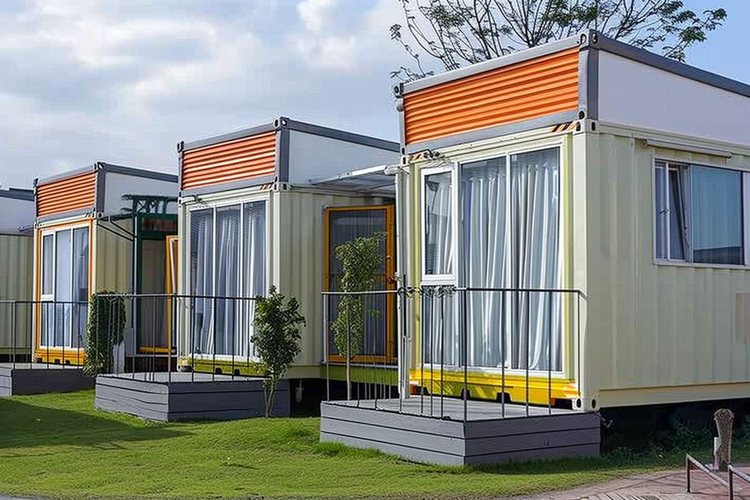Innovative Housing Solutions: Embracing Eco-Friendly Container Homes
Container homes are revolutionizing housing options by offering innovative and eco-friendly solutions for modern living. These sustainable dwellings combine cutting-edge design with environmental consciousness, using durable materials and efficient insulation. As demand for portable and prefab homes rises, container homes present a versatile option for those seeking stylish and environmentally responsible living spaces, transforming the housing market.

The Rise of Container Homes in the Housing Market
Recent years have witnessed a remarkable rise in the popularity of container homes in the housing market. Originally used for transporting goods across seas, these robust steel containers are now repurposed as residential spaces, thanks to their cost-effectiveness and adaptability. This trend is driven by several factors, with affordability taking the lead. Traditional home construction typically involves high costs and lengthy timelines. In contrast, container homes can be significantly cheaper, potentially saving homeowners thousands of dollars. For instance, while a standard home might cost upwards of $150 per square foot, a container home can be built for as low as $50 per square foot, according to research by Allied Market Research.
Moreover, container homes offer unmatched adaptability. Their modular nature allows homeowners to easily expand or modify their living spaces as needed. This flexibility caters to a wide range of lifestyles, from young professionals seeking minimalist living to families desiring scalable home solutions. Furthermore, as urban areas become more crowded and land prices soar, container homes provide a viable alternative for maximizing limited space, making them particularly appealing in densely populated cities.
Design and Sustainability Features
One of the most compelling aspects of luxury container homes is their innovative design and commitment to sustainability. The transformation from a basic steel box to a modern home involves ingenious design strategies that prioritize both aesthetics and environmental responsibility. Architects and designers are pushing the boundaries of creativity, incorporating features such as floor-to-ceiling windows, rooftop gardens, and open-plan living areas that maximize natural light and ventilation. These elements not only enhance the visual appeal but also contribute to energy efficiency.
Sustainability is at the core of container home construction. The use of recycled steel not only reduces waste but also decreases the demand for new building materials, which can have a significant environmental impact. Additionally, many container homes are equipped with state-of-the-art insulation and energy-efficient systems, including solar panels and rainwater harvesting setups. According to the Journal of Cleaner Production, these practices can reduce a household’s energy consumption by up to 30%, making container homes an excellent choice for eco-conscious individuals.
Benefits of Prefabricated Living Spaces
The benefits of prefabricated living spaces extend beyond cost savings and sustainability. Prefab homes, including container homes, offer a level of convenience that traditional construction cannot match. Most of the construction process takes place off-site, in controlled environments, which minimizes delays due to weather and other unforeseen factors. This means homeowners can expect faster completion times, reducing the stress and uncertainty often associated with building a new home.
Moreover, the portability of container homes is a significant advantage. For those who value mobility, these homes can be relocated with relative ease, allowing residents to explore new areas without leaving the comfort of their home behind. This feature is particularly attractive to those who work in industries that require frequent relocation or for retirees seeking adventure in their golden years.
Future Trends in Eco-Friendly Housing
As the demand for sustainable living solutions grows, the future of container homes looks promising. Innovations in materials and construction techniques continue to emerge, enhancing the functionality and appeal of these homes. For instance, advancements in smart home technology are being integrated into container homes, offering residents increased control over their living environments through automated systems that manage lighting, temperature, and security.
Furthermore, as more people become aware of the environmental impact of traditional housing, the container home industry is poised for substantial growth. According to a report by Grand View Research, the global container homes market is expected to reach $73 billion, driven by a growing emphasis on green building practices and the need for affordable housing solutions.
In conclusion, luxury container homes represent a modern solution for sustainable living, offering a perfect blend of affordability, adaptability, and environmental consciousness. Whether drawn to the innovative design, the eco-friendly benefits, or the flexibility of prefab living, container homes provide a compelling option for those looking to embrace a sustainable lifestyle. Explore how these unique homes are reshaping the housing landscape and consider how they might fit into your vision of modern living.
Disclaimer: All content, including text, graphics, images and information, contained on or available through this web site is for general information purposes only. The information and materials contained in these pages and the terms, conditions and descriptions that appear, are subject to change without notice.




